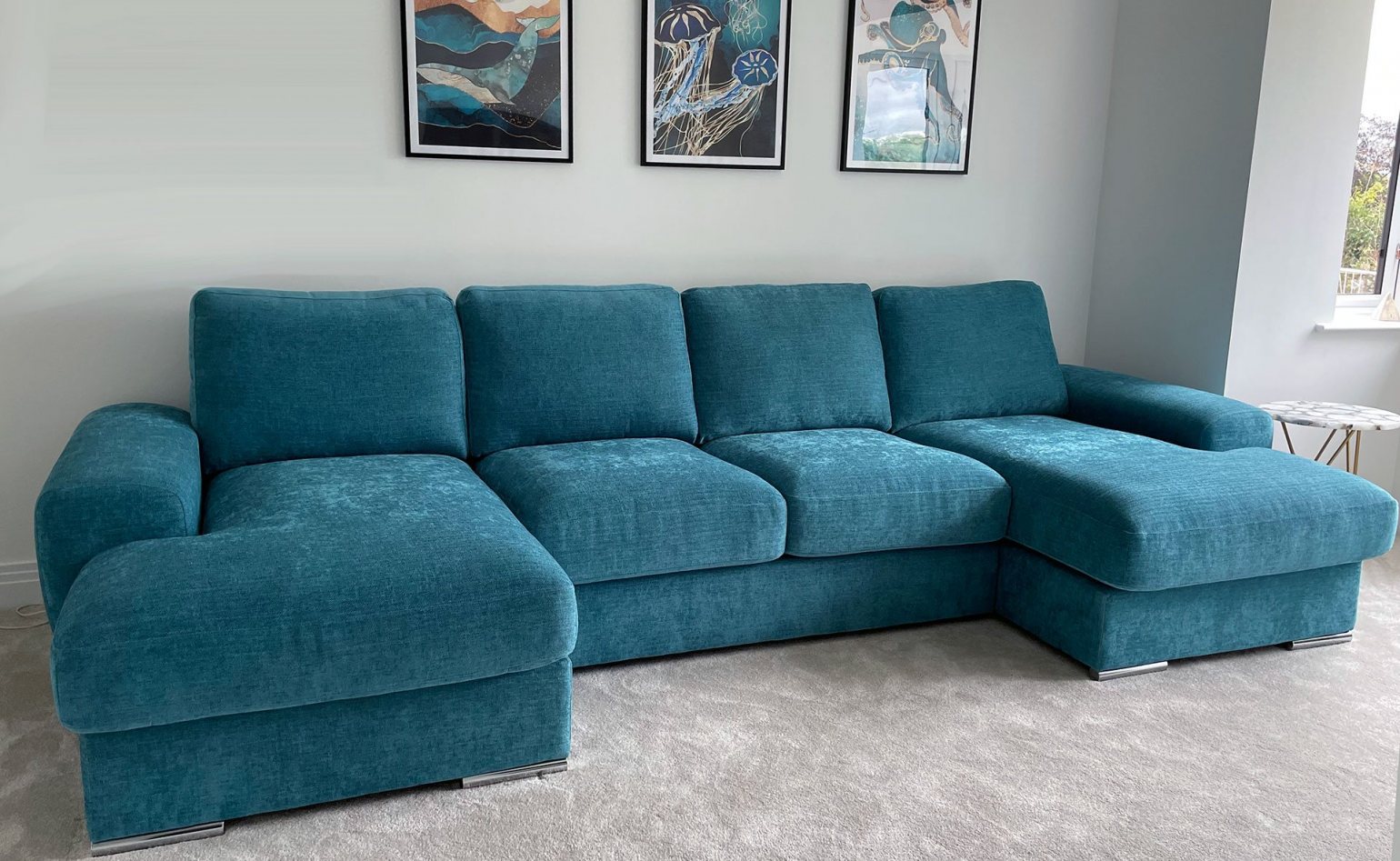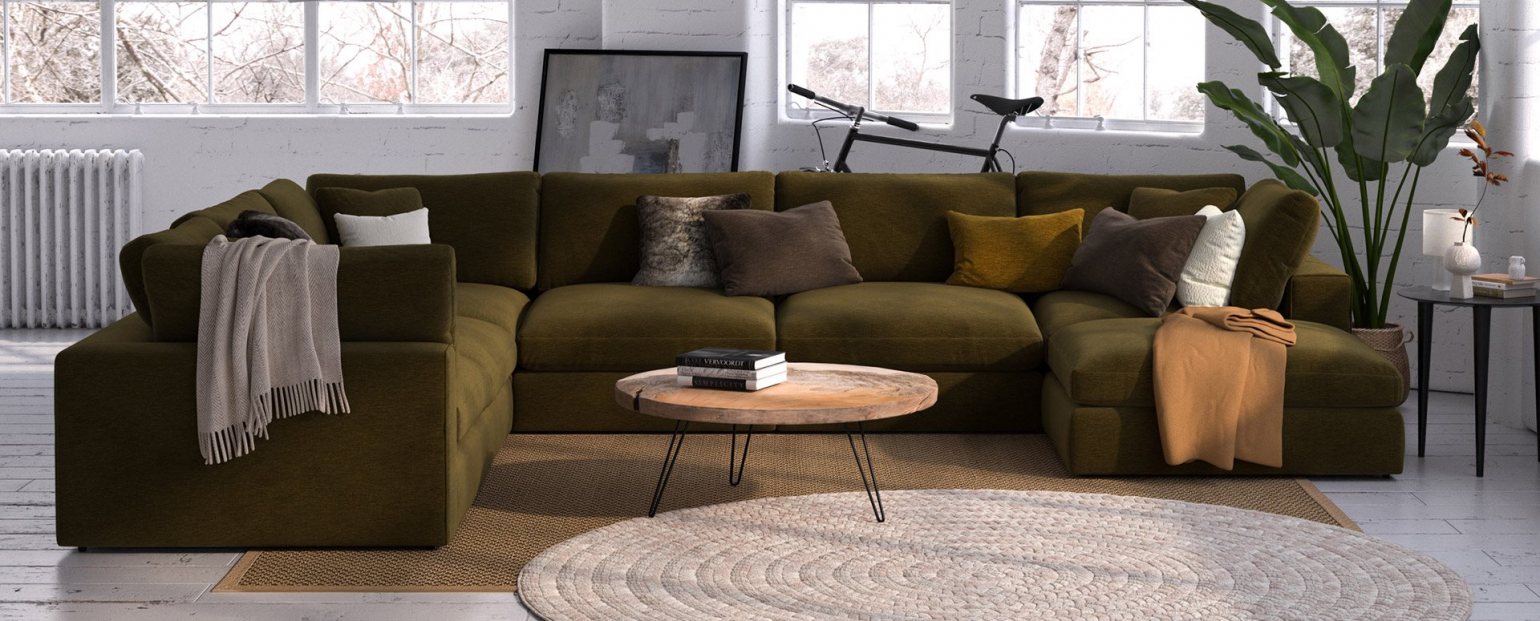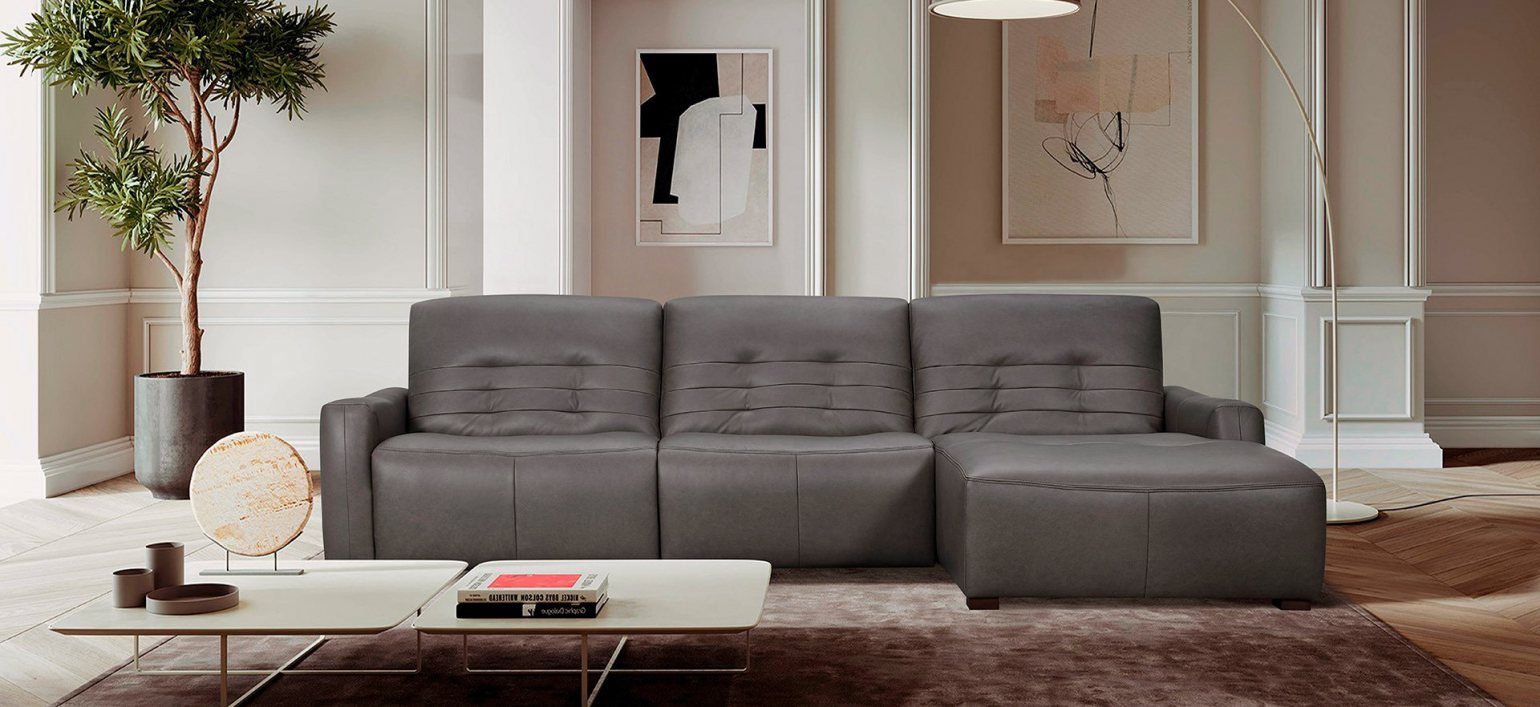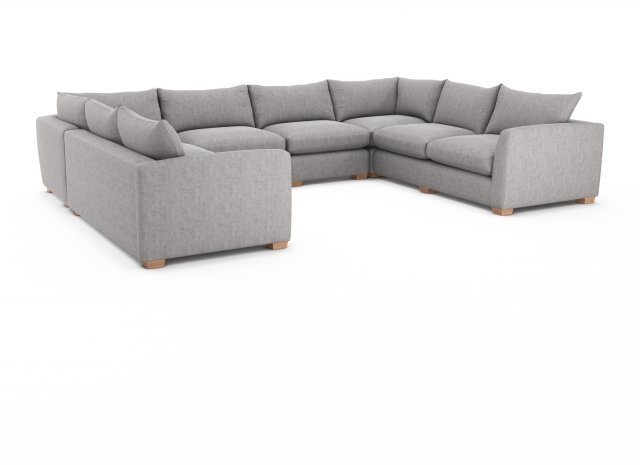Corner Sofa Buying Guide: Finding the Right Fit for Your Space

Corner Sofa Buying Guide: Finding the Right Fit for Your Space
Let’s be honest, choosing a corner sofa isn’t about picking the one that looks good in a showroom. It’s about finding something that works with your space, feels comfortable at the end of a long day and fits the way your room’s laid out, no awkward gaps, no squeezing past the corners.
Maybe you’re furnishing a first flat, revamping a family space, or finally upgrading that hand-me-down setup, this guide breaks down what you need to know. From sizing and layout to shapes, fabrics and finishes- we’ll help you figure out what makes sense for your room (and your routine)
Why Choose a Corner Sofa?
Corner sofas make the most of awkward spaces, help zone open-plan rooms, and, admittedly, they’re great for lounging. They offer all the seating you need without having to cram in extra chairs and tend to make a room feel more grounded.
Got a bigger living room? A large corner sofa fills the space without it looking empty. Working with less room? A small corner sofa or chaise sofa gives you the same comfort without taking over. There are even options with built-in sofa beds if you want something with added flexibility.

How to Measure for a Corner Sofa
Getting the size right is one of the most important steps when choosing a corner sofa. Too big, and it can take over the room. Too small, and it might not give you the comfort or seating space you need.
Here’s how to measure up properly:
- Start with your floor plan. Use masking tape or newspaper to map out the shape of the sofa on your floor. It’s a great way to visualise how it’ll sit in the room.
- Measure the full width and depth. For a corner sofa, the width is the longest side (usually the back), and the depth is how far it extends into the room from the corner. Take both measurements and check they work with the rest of your layout.
- Don’t forget the height. This is especially important if you’ve got low windowsills, radiators, or shelves behind where the sofa will go.
- Leave room to move. Allow at least 60–80cm of space for walkways so it doesn’t feel cramped.
- Check doorways and access. Make sure the sofa can actually get into the room — measure door frames, hallways, and stairwells too.
If your room has unusual dimensions or you just want to get it exactly right, consider a modular corner sofa that you can build around your space.
Choosing the Right Corner Shape for your Living Space
Corner sofas come in all kinds of layouts. The right one depends on how your room’s shaped and how you use it. Here’s a quick guide to some of the most popular shapes and when they tend to work best:

L Shaped Sofas
Left facing, right facing and symmetrical, these sofas are the 'traditional' style of corner. Ideal when one side of your room is more open than the other. These work well in layouts where you want to tuck the sofa neatly into a corner without blocking walkways, windows, or access to the rest of the room.
Find Yours
Chaise-End Sofas
A great middle-ground option. You still get a section to stretch out on, but without taking up as much floor space as a full corner layout. Perfect for smaller rooms or open-plan living areas where flexibility matters.
Explore Collection
C Shaped Sofas
Best for larger living rooms and bigger households. This shape gives you wraparound seating — ideal for entertaining, lounging, or film nights with the whole family. It fills out the room and brings everyone into one shared space.

U Shaped/ Curved sofas
Great for softening up more angular rooms. If your space feels a little boxy or lacks character, a curved sofa adds a flow that’s both stylish and functional. It also works well in design-led interiors where you're aiming for a more sculptural, considered look.
What Materials Best For Your Sofa- and Your Lifestyle
This one comes down to how you live. If you’ve got young kids, pets, or a tendency to spill tea when you’re half asleep, your sofa material matters.
- Fabric corner sofas come in everything from smooth velvets to chunky weaves. They’re warm, soft and give you loads of colour and texture options.
- Leather corner sofas are easier to wipe down and have a cleaner, more structured style. Great if you want a sharper look that’s still durable.
Look for stain-resistant fabrics if you know your sofa will see a lot of action. The finish might seem like a small detail now, but it’ll make a big difference in six months.
Styling Tips for Corner Sofas: Rugs, Lighting and Layout Ideas
Once your corner sofa’s in, the layout starts to make a bit more sense- but a few simple styling choices can help tie it all together.
- Use a rug to anchor it. It helps define the seating zone and makes everything appear more intentional, especially in open-plan setups.
- Balance the bulk. Corner sofas naturally dominate one part of the room. A floor lamp or slim side table on the other side helps keep things looking even.
- Add texture through accessories. A couple of scatter cushions, a chunky throw, or a footstool in a different fabric can soften the whole appearance.
- Think about what’s behind it. If it’s up against a wall, that space can be perceived as empty. A big piece of art or a few simple shelves can round things off without making it overly busy.
.jpg)
A Sofa That Works With the Way You Live
A corner sofa can completely change how your living space works, making better use of the room without needing extra furniture. With the right corner sofa size, shape and finish, it’s the kind of upgrade that makes day-to-day living feel smoother from the moment it arrives.
Wondering which corner sofa would work for your space? Browse Dansk’s full range of corner sofas and find something that fits both your room as well as your routine.
- Start with your floor plan. Use masking tape or newspaper to map out the shape of the sofa on your floor. It’s a great way to visualise how it’ll sit in the room.
-
Posted by Lee Cox
20th January 2025
